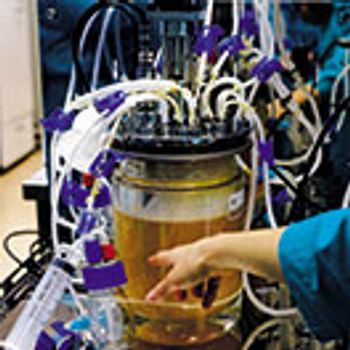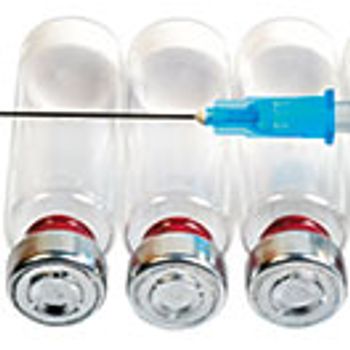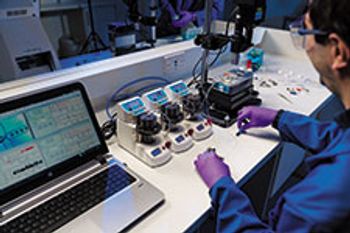
Mechanistic process and product modeling turns data into knowledge that can be extrapolated with known confidence for design space characterization and risk assessment.

Mechanistic process and product modeling turns data into knowledge that can be extrapolated with known confidence for design space characterization and risk assessment.

Collaborative robots work beside laboratory employees to improve efficiency in pharmaceutical research and quality control labs.

Non-destructive surface area measurement can improve stability testing.

Preventing problems in implementing a manufacturing execution system requires upfront analysis and detailed planning.

The companies partnered to build a 500-L single-use pilot-scale plant for biologics production.

New software tools by Tecan, a provider of automated laboratory instruments and solutions, complement each other to enhance process monitoring of its liquid-handling platforms.

FDA awarded nearly $3 million in grants for continuous manufacturing and other advanced manufacturing technologies as part of the agency’s efforts to ensure a robust and reliable supply of biological products.

Lonza’s new PyroTec Pro Robotic Solution provides a fully automated workflow for endotoxin detection.

Automated robotic arms manipulate nested trays and containers inside closed aseptic filling systems.

FDA grants support US research in continuous manufacturing monitoring and control techniques for bio/pharmaceutical manufacturing at Rutgers, MIT, and Georgia Tech.

A process control system based on PAT can compensate for variations in particle size, resulting in more consistent coating thickness in a Wurster coating process.

Modern technologies, including Industry 4.0 and the Industrial Internet of Things, offer opportunities to increase biopharmaceutical manufacturing efficiency.

Traditional barriers between upstream and downstream bioprocessing are slowly starting to break down, as biopharma embraces more advanced analytics and process control.

Automated robotic arms manipulate nested trays and containers inside closed aseptic filling systems.

Siemens will become a preferred supplier for Sartorius Stedim Biotech’s automation solutions, and SSB will create a globally standardized automation platform for its biopharmaceutical manufacturing systems.

The company will provide the first FlexFactory manufacturing platform for cell therapy manufacturing.

Dissolution testing remains one of the pharmaceutical industry’s most straightforward, least expensive QC tools. Research is focusing on ways to extend its reach, improve in-vitro and in-vivo correlation, and make real-time release testing a reality.

Quality by design highlights product and process understanding and control, integrating quality risk management, and is also considered a quality system for managing a product’s lifecycle.

Aerobic bioprocesses are highly dependent upon the oxygen transfer rate (OTR) from sparged to dissolved gas. The relatively low solubility of oxygen, however, makes the choice of mixer impeller configuration a critical design factor for the bioreactor vessel. This article describes a series of experiments and computational fluid dynamics (CFD) simulations to detail the effect of mixer configuration on the efficiency and effectiveness of a bioreactor vessel with respect to blend time and mass transfer.

Advanced data analytics tools are used by industry to find the golden nuggets in historical data, to aid in process development, to fine-tune production, and to achieve long-term improvements in product quality and throughput.

ASTM’s E-55.05 committee aims to turn best practices into industry standards in order to eliminate variability and allow a 70-year-old process to leverage 21st century tools, technologies, and practices.

InstantGMP INV is a validated software for real-time material tracking and inventory control in biopharmaceutical manufacturing.

Dolomite Microfluidics has developed the Drug Encapsulation System to provide scientists with a simple and scalable way of encapsulating drug samples.

Determining the right process conditions for a freeze-drying cycle requires an understanding of the effect of each step on the drug product.

Integrated computerized systems for data collection improve data security and offer a solution for handling temporary data.